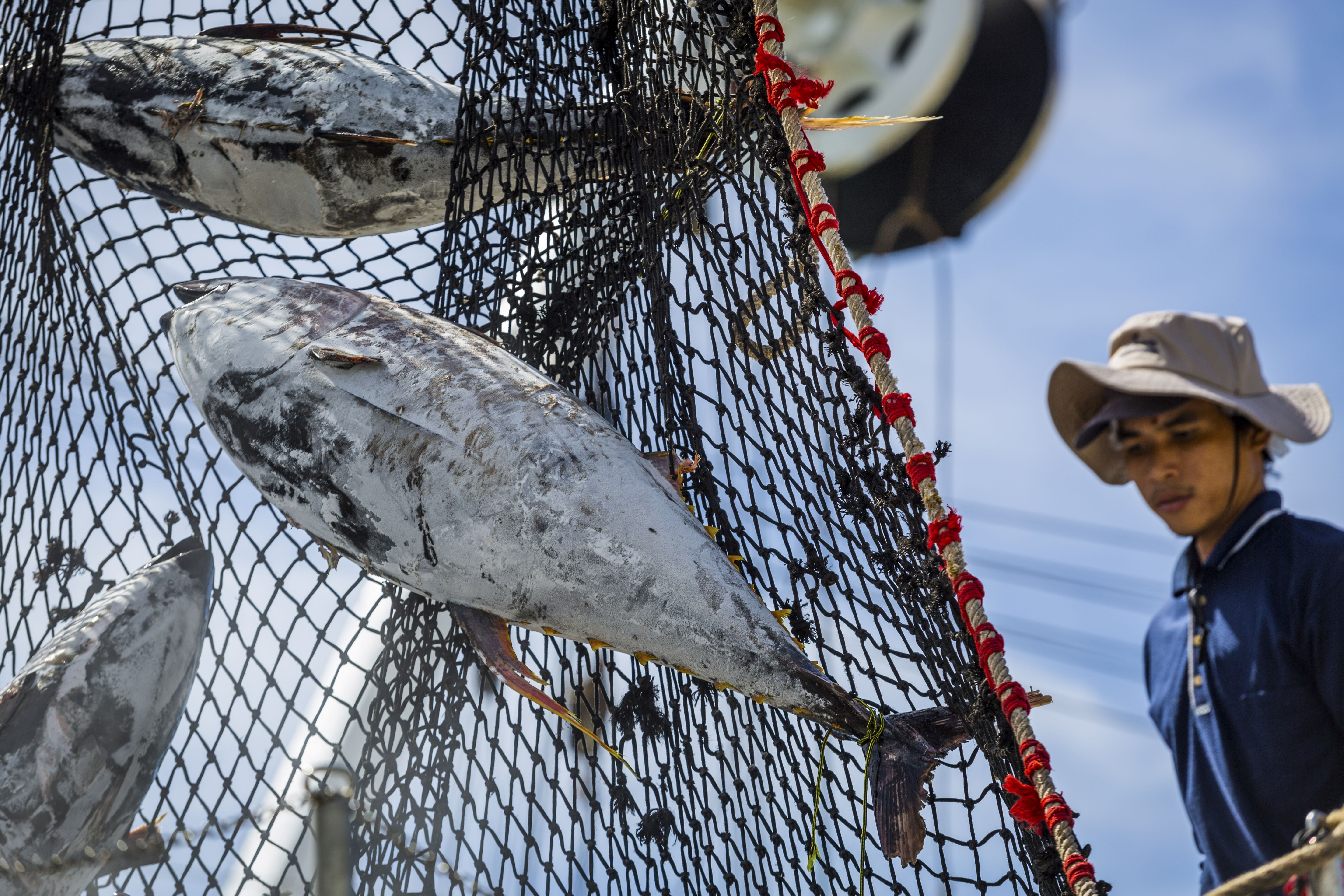
The Tuna Transparency Pledge
Tackling IUU fishing together by increasing #EyesOnTuna
On April 10, 2024, The Nature Conservancy launched the Tuna Transparency Pledge, a global initiative aiming to unite actors throughout the tuna supply chain to achieve 100% on-the-water monitoring on all industrial tuna vessels by 2027. The initial signatories of the Tuna Transparency Pledge span the entire supply chain and include Walmart, Albertsons Companies and Thai Union, along with the governments of Belize and the Federated States of Micronesia. The Nature Conservancy is seeking sign-ons from other retailers, seafood supply chain organizations and governments to address unsustainable and illegal tuna fishing practices and help drive industry-wide transformation. For more information, please contact tunapledge@tnc.org.
-
2 .9 billion people on Earth depend on fish for protein
That's equivalent to 40% of the global population. Yet two-thirds of global fisheries are either overfished or cannot sustain further pressure.
-
One of the most prized and popular fish is tuna
Each year, tuna fisheries produce 5 million tons of fish, with a dockside value of $10 billion USD. But a lack of transparency is threatening global seafood supply, harming coastal communities, and undermining marine conservation efforts.
-
Join The Tuna Transparency
To protect this valuable supply chain, including the fishers, coastal communities and businesses who rely on it, retailers, seafood suppliers, and governments across the world are joining the Tuna Transparency Pledge.

Inaccurate or unavailable data threatens the sustainable use of tuna stocks
A lack of visibility in the tuna supply chain is threatening global seafood supply, harming coastal communities, and undermining marine conservation efforts. The vast majority of illegal, unreported and unregulated (IUU) fishing takes place on legally licensed vessels, through prohibited activities such as misreporting of retained catch, shark finning and catching endangered species.
Without transparency at sea, retailers and seafood suppliers face the serious risk of stocking illegally and unsustainably sourced tuna products, compromising the longevity of supply chains, brand reputation and consumer trust.
Simply put—without accurate data on fishing activity, we cannot responsibly and effectively manage tuna fisheries and put a stop to illegal fishing.
On-The-Water Monitoring
From fishery to fishery, one challenge continues to surface: Insufficient science and compliance data are holding back industry efforts to increase transparency.
Monitoring—whether carried out by human or electronic observers— gives us the opportunity to have sight of what’s happening on fishing vessels, allowing fishery managers and companies to make great strides in eliminating IUU fishing at the source.
A Proven and Reliable Solution
Reliable and accurate information from on-the-water monitoring benefits every step in the supply chain, ensuring tuna supplies for future generations, verifying compliance with fishing regulations, and delivering the standards consumers expect from the industry.
Quote
On-the-water monitoring is the best way to guarantee seafood products were harvested in compliance with fishery laws.

Join the Tuna Transparency Pledge
The Tuna Transparency Pledge aims to achieve 100% on-the-water monitoring (through electronic monitoring and/or human observers) on all industrial tuna fishing vessels by 2027.
With a vision of a thriving global marine environment that provides stable and sustainable supplies of seafood, the initiative guides and unites companies and governments, helping lay the foundation for a more resilient and transparent tuna supply chain that allows people and the planet to thrive.
Quote
Retailers, seafood suppliers, and fishery managers are in a powerful position to influence and improve the tuna supply chain.
On-the-water monitoring helps ensure that the seafood on shelves has been harvested in compliance with fishery laws, while also providing critical data needed for the sustainable management of tuna and other wildlife.
Quote
The pledge protects the long-term viability of fisheries, valuable supply chains and coastal communities.
The Tuna Transparency Pledge
The Tuna Transparency Pledge is an initiative led by The Nature Conservancy with support from a variety of NGO and industry collaborators.





